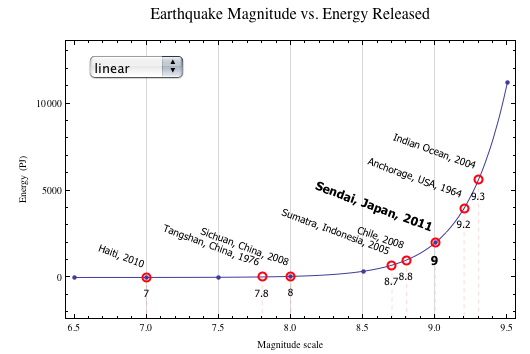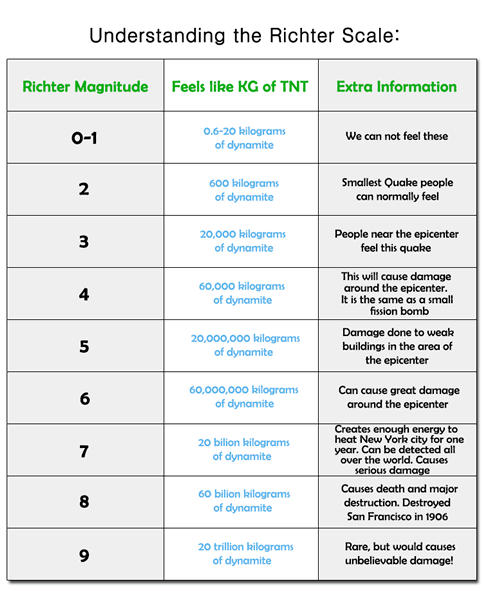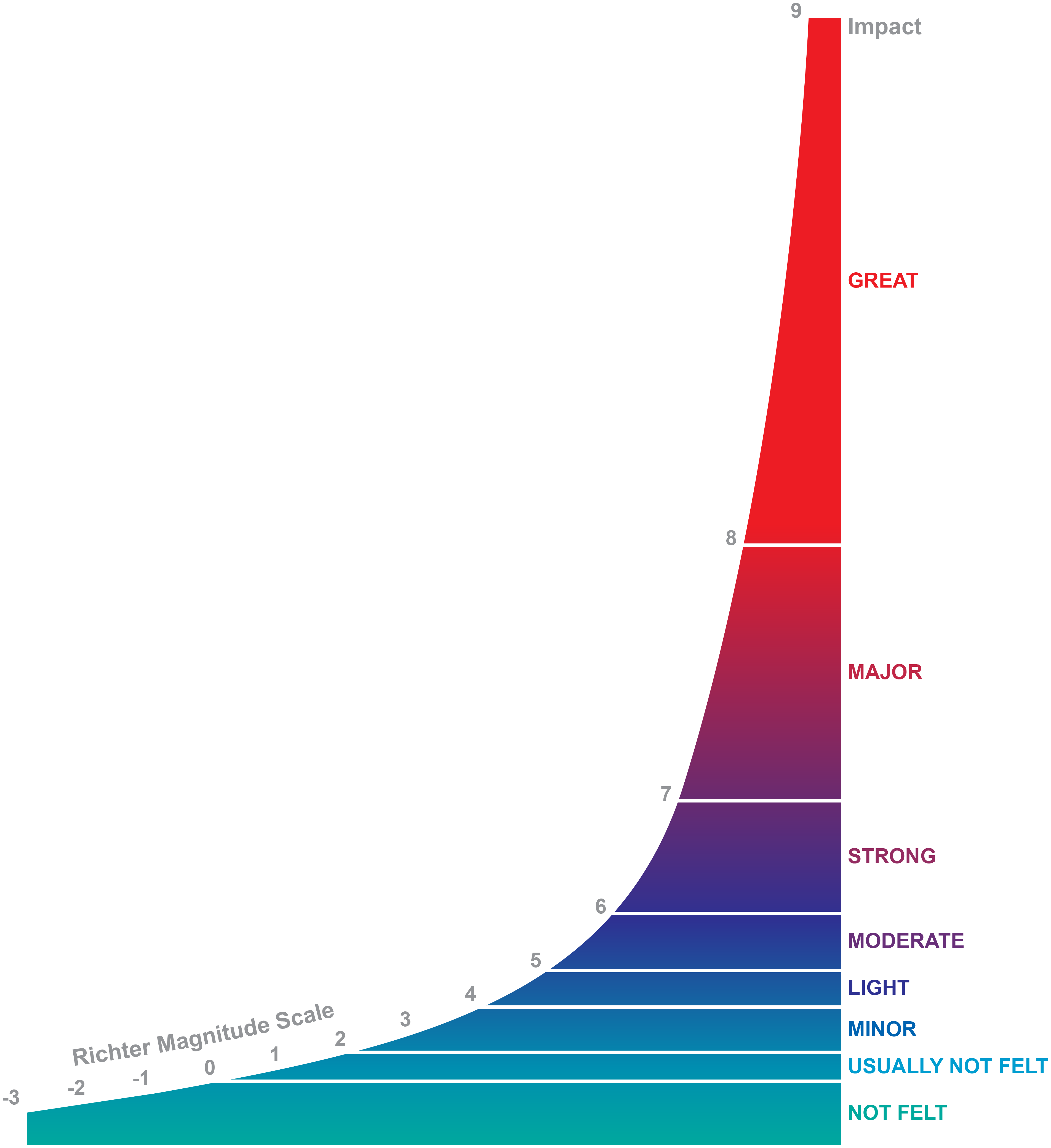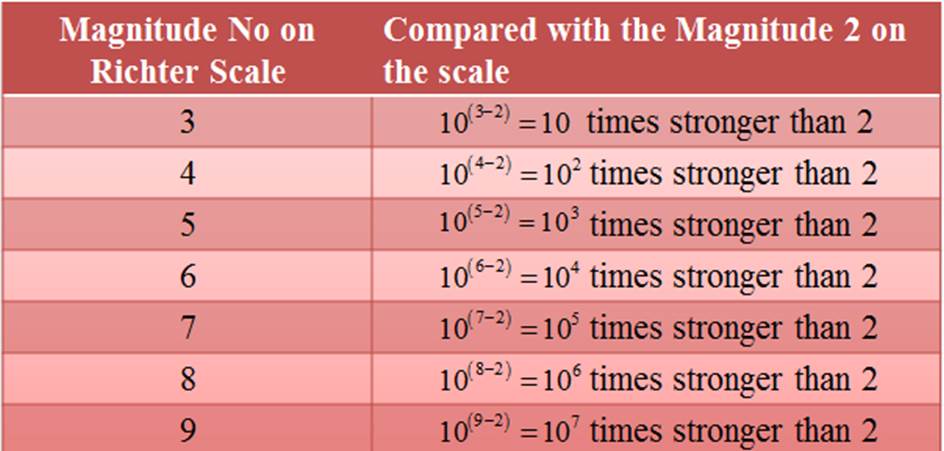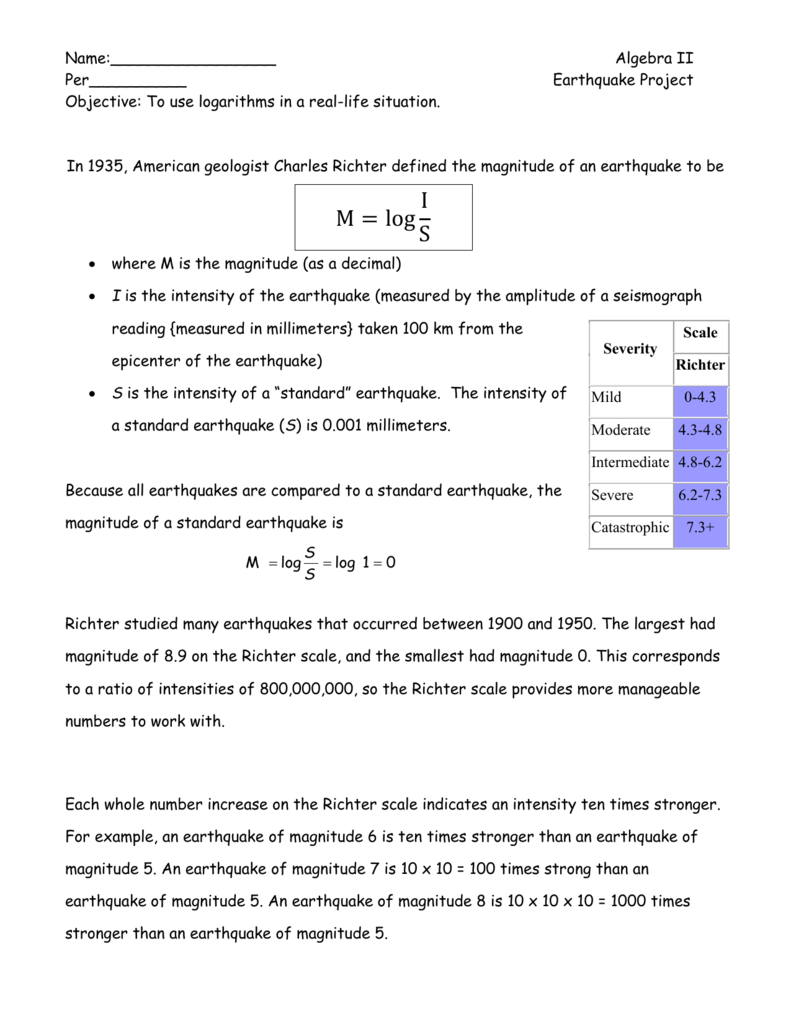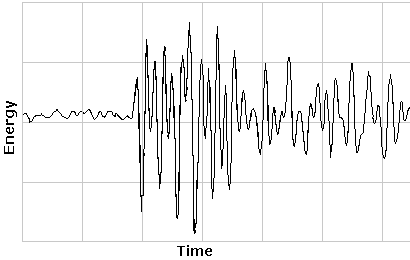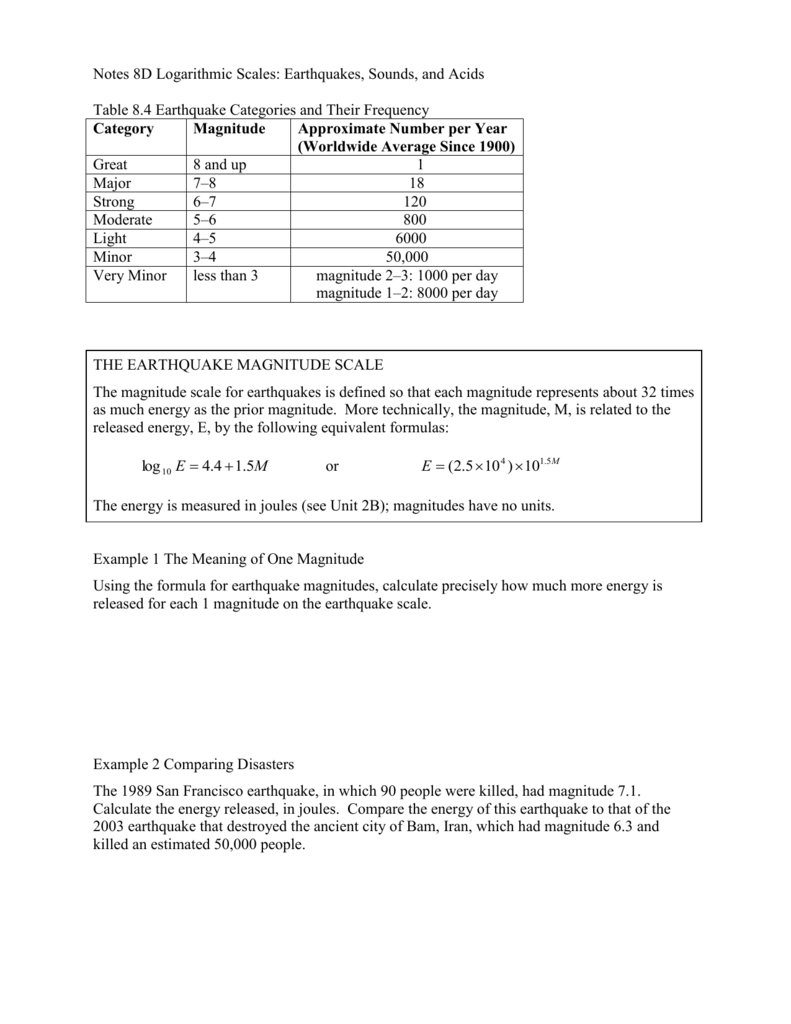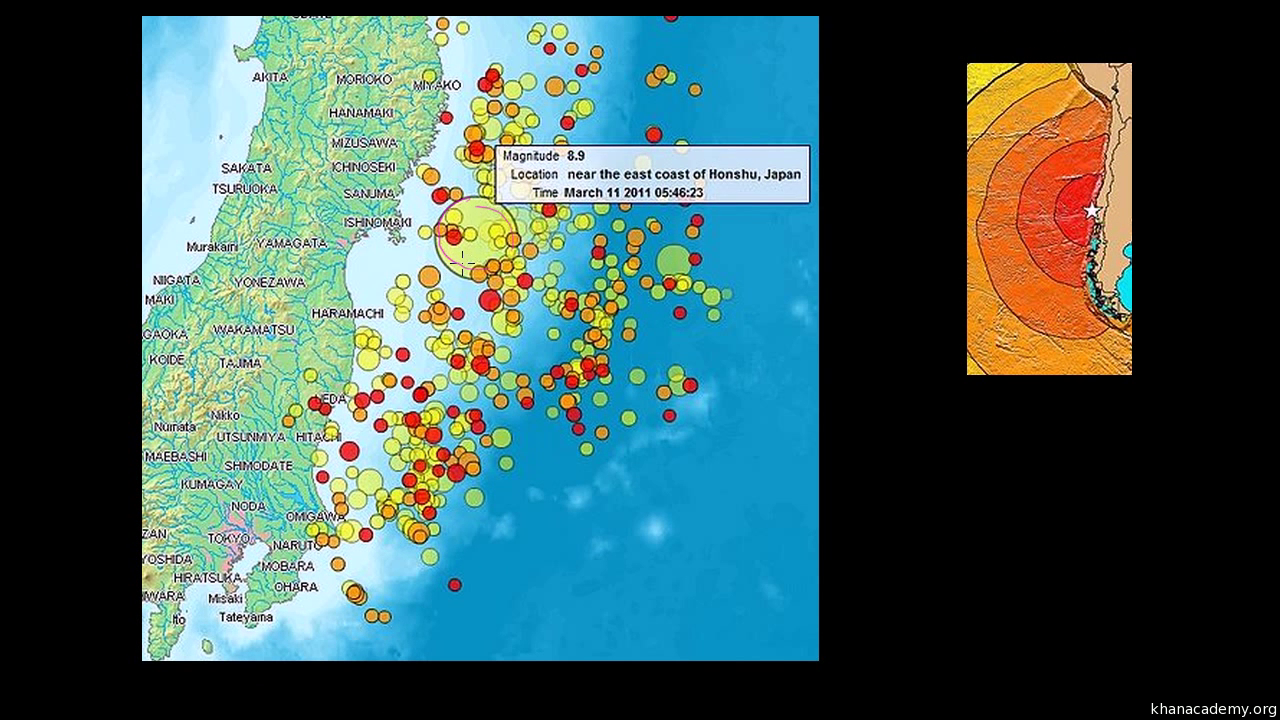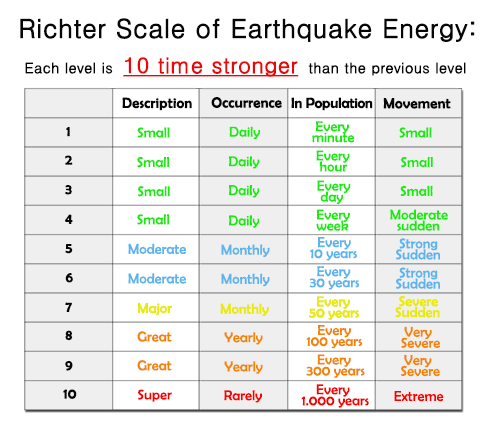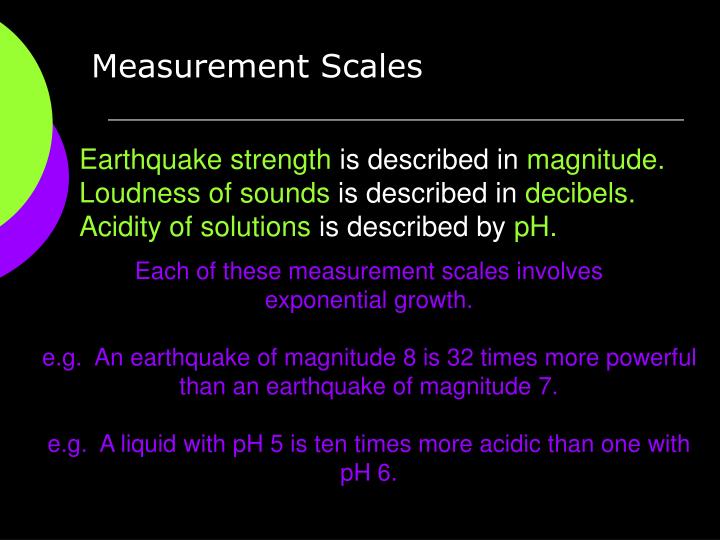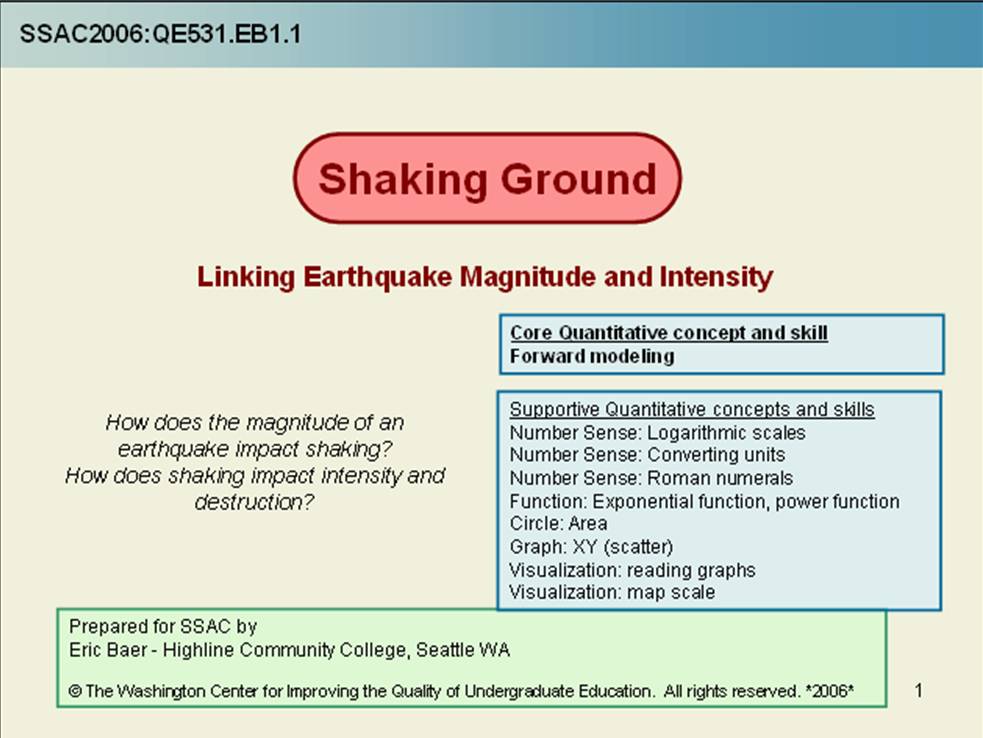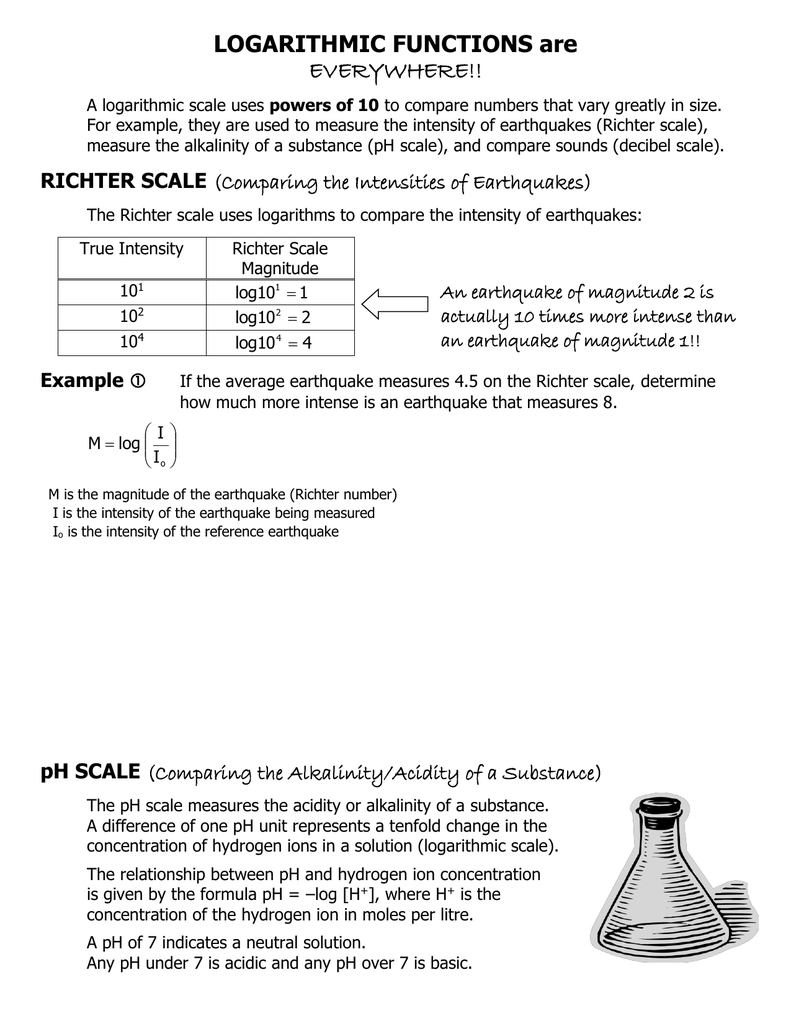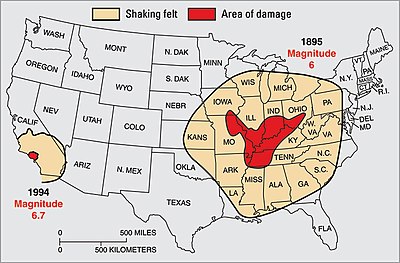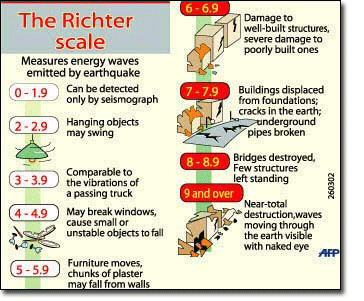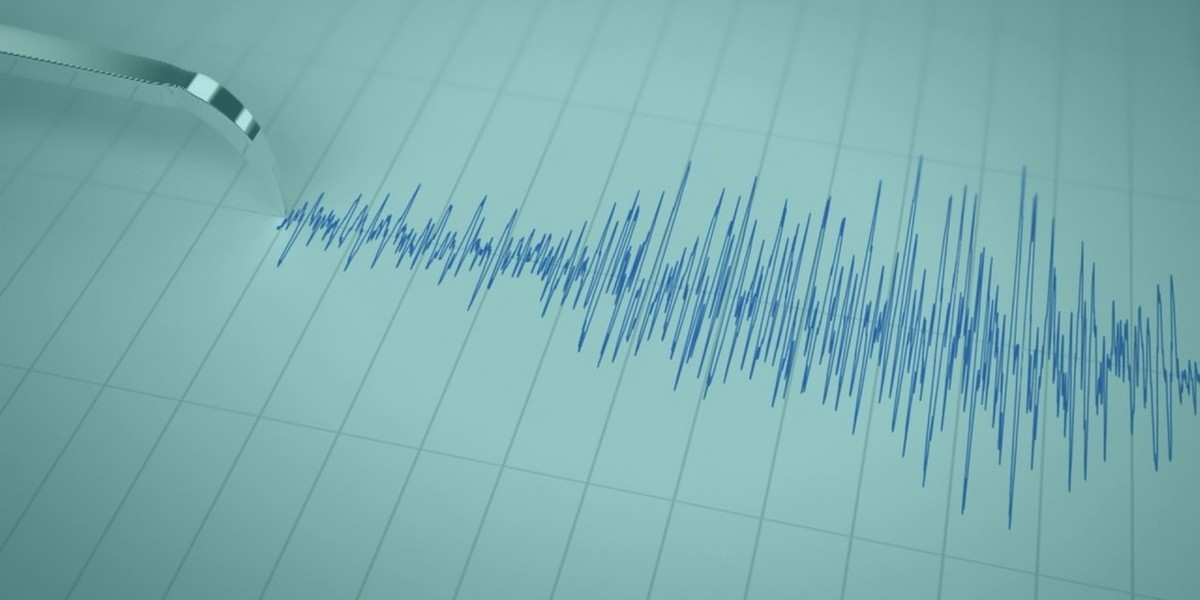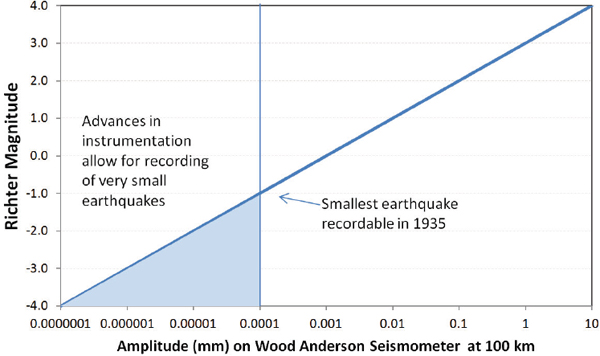Logarithmic Scale Earthquake Magnitude

For example a magnitude 5 3 might be computed for a moderate earthquake and a strong earthquake might be rated as magnitude 6 3.
Logarithmic scale earthquake magnitude. The richter scale earthquakes are measured on the richter scale which is a base 10 logarithmic scale. This scale measures the magnitude of an earthquake which is the amount of energy released by it. Richter scale widely used quantitative measure of an earthquake s magnitude size devised in 1935 by american seismologists charles f.
The numbers 10 and 20 and 60 and 70 are not the same distance apart on a log scale. Hanks and hiroo kanamori similar to the local magnitude scale m l defined by. Magnitude is determined using the logarithm of the amplitude height of the largest seismic wave calibrated to a scale by a seismograph.
The largest had magnitude of 8 9 on the richter scale and the smallest had magnitude 0. Denoted explicitly with m w or mw and generally implied with use of a single m for magnitude is a measure of an earthquake s magnitude size or strength based on its seismic moment a measure of the work done by the earthquake it was defined in a 1979 paper by thomas c. Richter studied many earthquakes that occurred between 1900 and 1950.
8 most magnitude scales are based on measurements of only part of an earthquake s seismic wave train and therefore are incomplete. For example a magnitude 5 3 is a moderate earthquake and a 6 3 is a strong earthquake. This corresponds to a ratio of intensities of 800 000 000 so the richter scale provides more manageable numbers to work with.
All magnitude scales retain the logarithmic scale as devised by charles richter and are adjusted so the mid range approximately correlates with the original richter scale. For every single increase on this scale the magnitude is increased by a factor of 10. Because of the logarithmic basis of the scale each whole number increase in magnitude represents a tenfold increase in measured amplitude as measured on a seismogram.
In fact the richter scale breaks down for very large seismic events and a newer calculation has become more standard. The moment magnitude scale mms. The richter scale also called the richter magnitude scale or richter s magnitude scale is a measure of the strength of earthquakes developed by charles f.
This was later revised and renamed the local magnitude scale denoted as ml or m l. The moment magnitude scale and the wikipedia article. As an estimate of energy each whole number step in the magnitude scale.
Richter and presented in his landmark 1935 paper where he called it the magnitude scale. Even though today s earthquake was estimated to be 2 5 times the magnitude of the actual earthquake the richter scale isn t the metric you want to use for the. Magnitude is expressed in whole numbers and decimal fractions.
Because of various shortcomings of the m l scale most. Visit howstuffworks to learn more.


